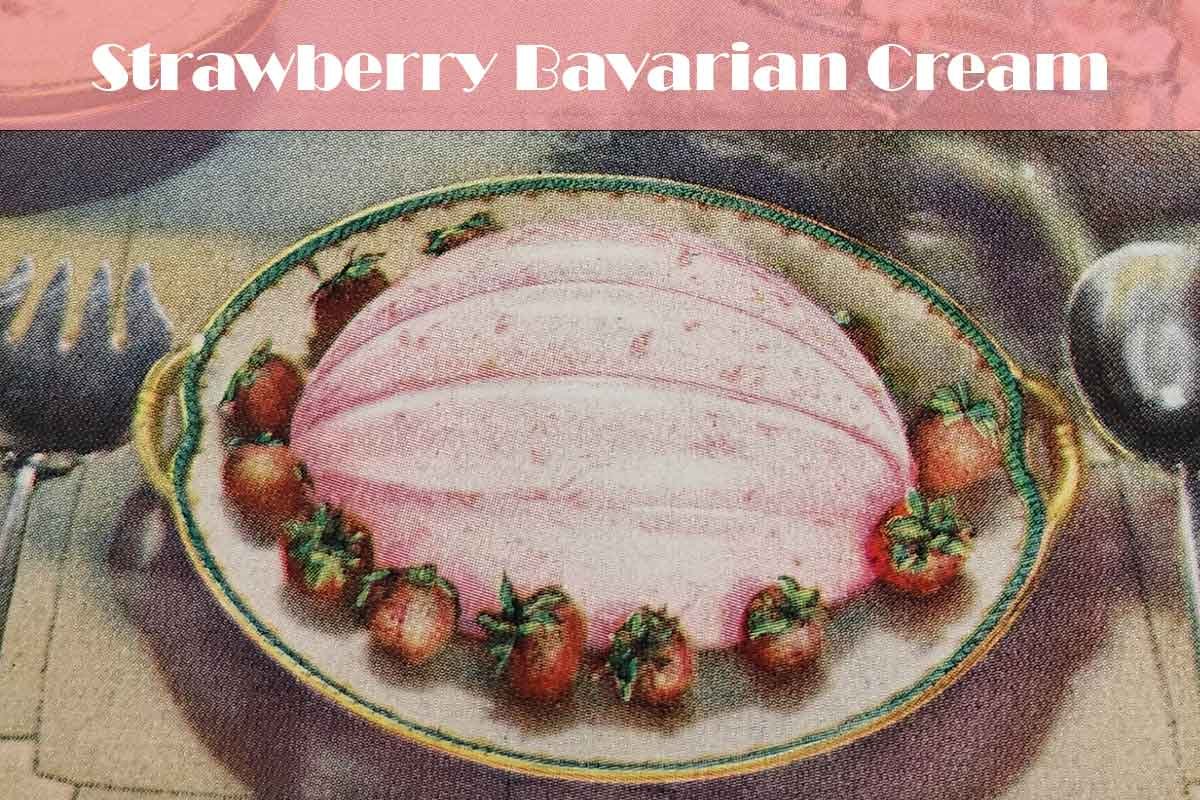This recipe for Strawberry Bavarian Cream comes from 1930 and has a light, mouse-like texture that is meant to be served molded. Unlike many Bavarian cream recipes that have a custard base using eggs, cream, and gelatin, this version skips the eggs and relies on gelatin, cream, and crushed berries for a lighter, airy texture.
It also notably did not include any sugar in the ingredient list and instead suggested sweetening the fresh strawberries “to taste” depending on ripeness with “about one-half cup”. Since the recipe calls for crushed, fresh fruit it seemed like the perfect time to macerate (heatless tenderizing) the berries with a little sugar. The maceration process also creates some lovely, lightly sweetened strawberry juice to use instead of store-bought fruit juice. See our suggestions below on adding sweetness to this recipe using fresh or canned berries.

Strawberry Bavarian Cream - 1930
Ingredients
- 2 Tbsps Unflavored Gelatine Powder
- ¼ cup Cold Water
- ½ cup Fruit Juice
- 1½ cup Fresh* or canned fruit** (If using canned fruit, drain well.)
- 1½ cup Cream (Heavy or Whipping Cream)
Instructions
- In a medium, heat-proof bowl, whisk together gelatin and cold water. Meanwhile, heat the fruit juice until it is simmering. Whisk into gelatin mix and set aside to cool for 10-15 minutes.
- Stir in fruit and place in refrigerator to chill. Stir occasionally (every 20-30 minutes).
- When the fruit mix has started to thicken (approx 60-90 minutes), whisk whipping cream until stiff and gently fold into the berry mix until incorporated.
- Dip your mold or pan in water. Shake off excess water and pour in the fruit mixture.
- Place in refrigerator and chill until firmly set ( approx 2-3 hours). Gently unmold onto a serving plate. Garnish with additional fruit and cream and serve chilled.
Notes
Suggestions for Making Strawberry Bavarian Cream
If you are using fresh strawberries when making Strawberry Bavarian Cream
Instead of using fruit juice, macerate the strawberries and use the sweetened syrupy juice.
To macerate the strawberries
Toss diced strawberries with 2-3 tablespoons of granulated sugar in a bowl. Cover and place in the refrigerator for at least one hour or until the sugar is dissolved and the fruit has released its juices. For more syrup and softer berries, stew longer (even overnight). I prefer firmer berries so 1-2 hours was perfect and I mushed the berries with a fork to release more juice.
If you are using canned fruit in this recipe
We recommend using high-quality canned fruit and to avoid canned fruit pie filling. We are fans of Oregon Fruit Company‘s canned fruits, especially their Dark Sweet Cherries. The juice the fruit is packed in can be substituted for the fruit juice in this recipe.
Other Suggestions
+ Swap strawberries for other berries or a mix of berries like blueberries, raspberries, blackberries, or cherries.
+ Add 1-2 tablespoons of fresh lemon or orange zest to mix with crushed berries.
+ Wait to unmold and garnish until 30-60 minutes before serving. Keep the Bavarian chilled until ready to serve.
Source
This recipe is adapted from a recipe appearing in The “Silent Hostess” Treasure Book (1930 edition).


Comments are closed.